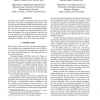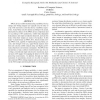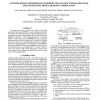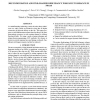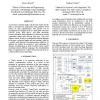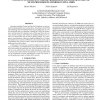121
click to vote
FPL
2006
Springer
15 years 4 months ago
2006
Springer
FPGAs have reached densities that can implement floatingpoint applications, but floating-point operations still require a large amount of FPGA resources. One major component of IE...
104
click to vote
FPL
2006
Springer
15 years 4 months ago
2006
Springer
In this paper we introduce a new method to identify IP cores in an FPGA by analyzing the content of lookup tables. This techniques can be used to identify registered cores for IP ...
FPL
2006
Springer
15 years 4 months ago
2006
Springer
We discuss the problem of communication-aware module placement in array-like reconfigurable environments, such as the Erlangen Slot Machine (ESM). Bad placement of modules may deg...
104
click to vote
FPL
2006
Springer
15 years 4 months ago
2006
Springer
FPGA devices exhibit manufacturing variability. Device ratings and Timing margins are typically used in order to cope with inter-device and intra-device variability respectively. ...
104
click to vote
FPL
2006
Springer
15 years 4 months ago
2006
Springer
This paper provides a realistic case study of using the previously introduced SIMPPL system architectural model, which fixes the physical interface and communication protocols bet...
99
Voted
FPL
2006
Springer
15 years 4 months ago
2006
Springer
As manufacturing technology enters the ultra-deep submicron era, wafer yields are destined to drop due to higher occurrence of physical defects on the die. This paper proposes a y...
101
Voted
FPL
2006
Springer
15 years 4 months ago
2006
Springer
A new large constraint length, soft decision viterbi decoder fabric is presented for deployment using platform based system on chip methodologies. The decoder can be reconfigured ...
125
Voted
FPL
2006
Springer
15 years 4 months ago
2006
Springer
Emerging embedded System-on-Chip (SoC) platforms are increasingly becoming multiprocessor architectures. The advances in the FPGA chip technology make the implementation of such a...
125
Voted
FPL
2006
Springer
15 years 4 months ago
2006
Springer
We present an efficient implementation of a state of the art algorithm PixelMatch for matching all pixels within consecutive video frames. The method is of practical interest for ...
98
Voted
FPL
2006
Springer
15 years 4 months ago
2006
Springer
This paper describes a solution for the generation of true random numbers in a purely digital fashion; making it suitable for any FPGA type, because no FPGA vendor specific featur...

